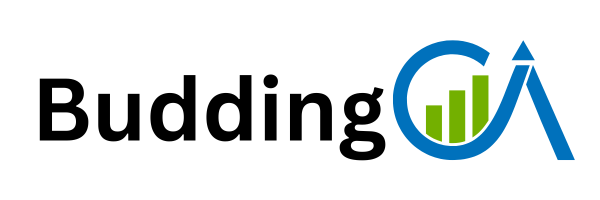Multiple-choice questions (MCQs) are now a regular part of the CA Foundation, Intermediate, and Final examinations. They can help you score well if approached correctly, but they can also reduce your marks if you make careless mistakes. Negative marking can turn a good attempt into a below-average performance.
The good news is that with the right strategies, you can reduce the risk of losing marks unnecessarily. Let’s explore practical ways to attempt CA MCQ papers effectively and avoid negative marking.
1. Understand the Exam Pattern and Marking Scheme
Before you can control negative marking, you need to know how the marking works.
- CA Foundation: Certain papers have MCQs with 0.25 marks deducted for each wrong answer.
- CA Intermediate and Final (Objective Papers): The penalty for wrong answers varies, but is usually 0.25 marks per incorrect choice.
- No negative marking for unanswered questions, so skipping a question can be better than guessing blindly.
Tip: Read the official ICAI guidelines before the exam. Sometimes, the pattern changes, and not knowing can cost you.
2. Read Each Question Carefully
Negative marking often happens because students rush through the question and miss key words.
For example:
- “Which of the following is NOT a feature of GST?”
If you miss the word NOT, you will answer incorrectly despite knowing the topic.
How to avoid this:
- Read the entire question slowly the first time.
- Underline or mentally note tricky words like NOT, EXCEPT, LEAST, MOST, INCORRECT.
- If the question has numerical values, double-check units and data.
3. Avoid Blind Guessing
Guessing without any reasoning is the fastest way to lose marks. In CA exams, it is better to leave a question blank than to risk losing 0.25 marks.
What you can do instead:
- Use the elimination method: Strike out obviously wrong options and choose from the remaining ones.
- Look for clues within the question itself. Sometimes, the wording hints at the correct answer.
- If you can narrow it down to two options but still feel unsure, attempt only if you have a strong reason to believe one is right.
4. Manage Your Time Wisely
Rushing through the last few questions increases the risk of silly mistakes. Poor time management leads to negative marking because you don’t give enough attention to each question.
Time management tips:
- Divide the paper into segments (for example, 30 questions in 30 minutes).
- Attempt easier questions first to build confidence and save time for tougher ones.
- Keep the last 5–10 minutes for reviewing doubtful answers rather than attempting new guesses.
5. Be Careful with Numerical MCQs
In papers like Accounting, Costing, and Financial Management, calculation errors are a big cause of negative marking.
How to reduce mistakes:
- Write down calculations neatly on the rough sheet.
- Use the calculator effectively but recheck key steps.
- Ensure you are working in the correct units (e.g., lakhs vs crores, percentages vs decimals).
- After getting an answer, quickly check if it makes logical sense. If the answer seems too high or too low, recheck.
6. Master the Elimination Technique
One of the most effective ways to avoid negative marking is to rule out wrong answers systematically.
Here’s how:
- Read all four options.
- Eliminate those that are clearly irrelevant or incorrect.
- For the remaining two, compare them carefully with the question’s wording.
- Pick the one that aligns most with ICAI’s study material or past trends.
Example:
Question: “Which accounting standard deals with construction contracts?”
- AS 2 – Valuation of Inventories ❌
- AS 7 – Construction Contracts ✅
- AS 10 – Property, Plant and Equipment ❌
- AS 13 – Investments ❌
7. Don’t Change Answers Without a Strong Reason
Many students lose marks because they second-guess themselves and change correct answers to wrong ones.
Unless you are absolutely sure your first answer was wrong, avoid changing it. Often, your first instinct is correct because it comes from your preparation and practice.
8. Practice With Mock Tests Under Exam Conditions
Practising MCQs in a timed environment helps you get used to pressure and decision-making.
Benefits of mock tests:
- Identify topics where you make the most mistakes.
- Learn how to balance speed and accuracy.
- Build confidence in answering without overthinking.
Try solving ICAI’s past MCQs and RTPs regularly. Analyse every wrong answer to understand why you made the mistake—lack of knowledge, misreading, or calculation error.
9. Mark Doubtful Questions for Review
During the exam, if you are unsure about an answer, mark it for review and move on. Come back to it after completing the rest of the paper.
This prevents:
- Spending too much time on a single question.
- Making rushed guesses in the last minutes.
10. Maintain a Calm and Focused Mindset
Negative marking often increases when you are anxious or under stress.
Tips to stay calm:
- Take deep breaths before starting the paper.
- If a question seems tough, skip and return later.
- Avoid comparing progress with other students during the exam.
11. Learn the Common Traps in ICAI MCQs
ICAI’s MCQs often have similar-looking options or numbers that differ slightly.
Example:
- 15%
- 15.5%
- 14.5%
- 16%
If you rush, you might pick the wrong one even if your calculation is correct. Always match your final answer exactly with the given options.
12. Keep a Balanced Approach
Remember, MCQs are about accuracy as much as speed. Attempting more questions is good, but only if you are confident in your answers.
Sometimes, attempting fewer but more accurate questions can give you a better score than attempting all with low accuracy.
13. Revise Your Core Concepts
Most negative marking happens because of unclear concepts. If you understand the fundamentals well, you are less likely to make mistakes.
Before the exam:
- Revise ICAI study material and MCQ booklets.
- Go through Important Questions and Case Studies for scenario-based MCQs.
- Focus on topics you repeatedly get wrong in practice.
14. Use the “Two-Pass” Strategy
This is a simple way to improve accuracy:
First Pass: Answer all easy and sure-shot questions quickly.
Second Pass: Attempt the moderate and doubtful ones.
This ensures that you secure maximum marks before dealing with tricky questions that might cause negative marking.
15. Keep Track of Attempted vs Skipped Questions
During the exam, note how many questions you have attempted and how many you have skipped. This helps in:
- Avoiding accidental double-marking.
- Ensuring you don’t leave questions you actually know.
Final Thoughts
Avoiding negative marking in CA MCQ papers is not just about avoiding wrong answers—it’s about maximising your score by being accurate and strategic.
With clear concepts, proper time management, and smart question selection, you can attempt the paper confidently and reduce the chances of losing marks unnecessarily.
Remember: In CA exams, every 0.25 mark counts. A few careful decisions during the paper can be the difference between clearing and reappearing.
Calling all CA dreamers!
🔴 Are you tired of searching for the perfect articelship or job?
Well, fear no more! With 10K+ students and professionals already on board, you don't want to be left behind. Be a part of the biggest community around! Join the most reliable and fastest-growing community out there! ❤️
And guess what? It’s FREE 🤑
✅ Join our WhatsApp Group (Click Here) and Telegram Channel (Click Here) today for instant updates.




